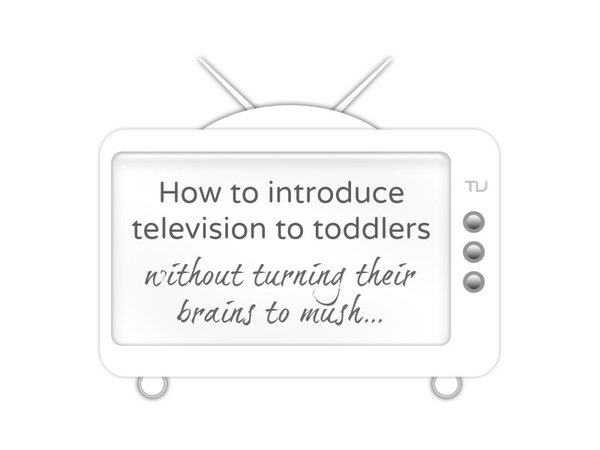 |
| (Image Source) |
This is the second part of my guide on ‘How to introduce television to toddlers (without turning their brains to mush)’. If you missed it, you can find the first part here.
Ironically, the first take home message was to turn off the TV and wait.
But wait for how long?
Most official sources, including the Australian Federal Government, recommend zero television for babies and toddlers under two years old (despite this recommendation being largely ignored by most Australian households1). Although I can’t find any research that explains why ‘two years old’ is such a magic number. Children do not necessarily develop at the same pace.
I believe families should take into consideration their own child, family, situation and priorities.
Personally, in the Banya household, we maintained a zero TV policy until JJ was 1.5 years old. It was at this age that JJ started to show the signs that she was ready for TV. She was able to maintain interest and follow a simple storyline from the start of a book to the end. She was showing signs of interactive play with adults and other children. She was starting to show an interest in arts and crafts.
She was showing signs that good quality children’s TV2 would actually aid her brain development rather than hinder it.
But in order for TV to aid, we decided to actively watch television with her. Every day, either Mr Banya or myself, sang along, danced along, and helped explain the various themes that were introduced to enable JJ to watch television in an interactive way.
We set our DVR to automatically record, so we could play what we want, when we wanted.
At first we introduced one 25 minute episode per day. JJ often watched the same episode repeatedly for days in a row.
During our daily play, JJ and I would expand upon any new themes that had been introduced. We’d borrow relevant library books, role-play the various characters, retell the stories and sing the songs.
There were tears. Here is a clip of Mr Banya and JJ, when JJ had finished watching her second episode ever. You can just hear her saying “I love it” at about frame 0:50. So sad!
Thankfully these post-TV tears subsided a few days later, once JJ realised that TV would always finish, tears wouldn’t put it back on, and that it would indeed come back again the following day.
But soon, JJ started asking to watch. Throughout the day she would ask “Watch Playschool?”. We used this as an opportunity to teach her about telling the time. Not only did she stop bugging me to watch TV, but she also started to understand about clocks and time, and she started to self-direct. Win-win-win!
| A one-sticker solution! |
But regardless of when is right for you, once you do decide to turn the TV on which shows are the best to start with? And which shows to avoid? I’ll be tackling these questions next…
xx
Danya
2 My views on what makes “good quality children’s TV” will be coming in the next part of this series.

